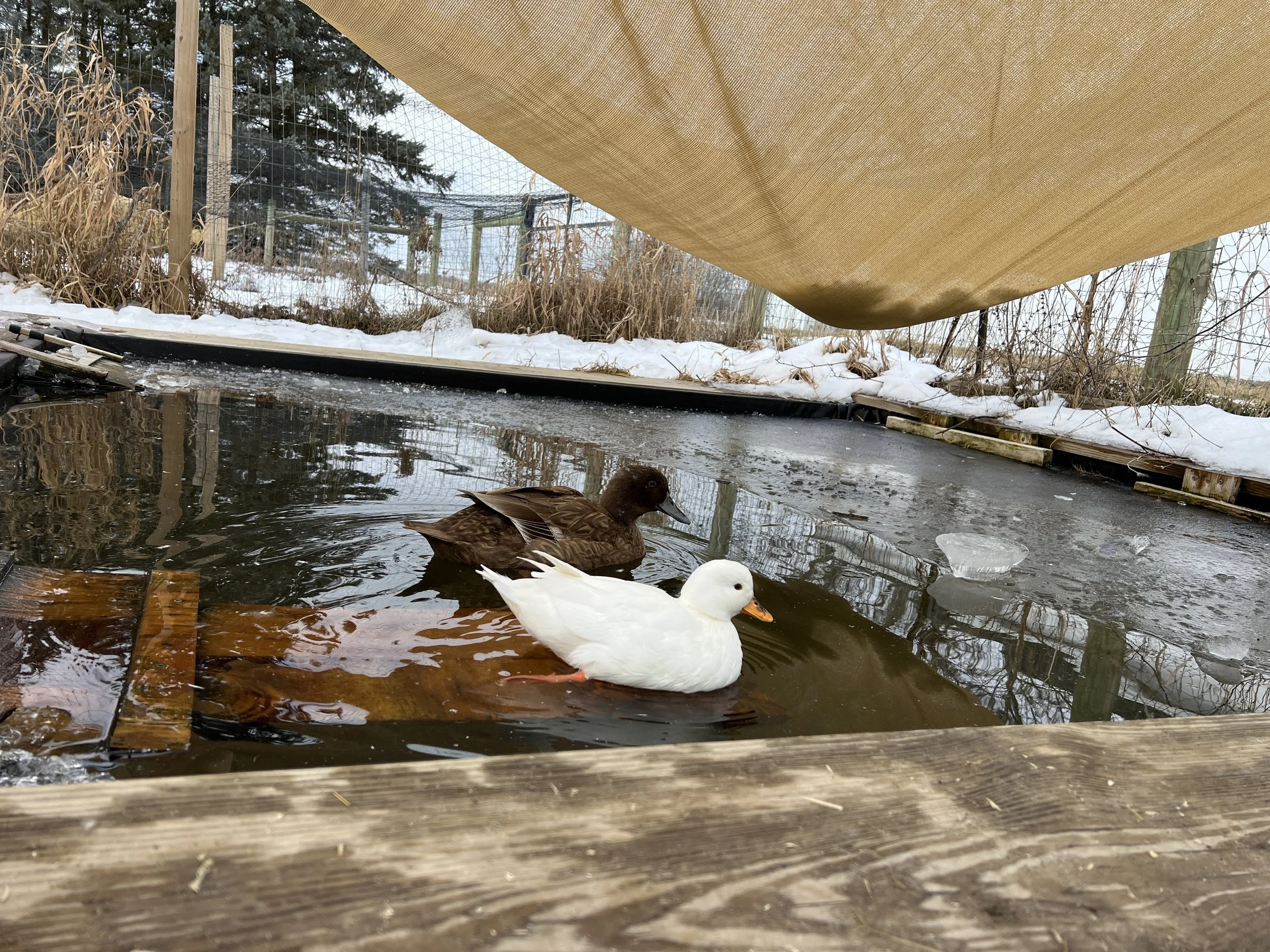Learn About Ducks and Geese
Ducks are curious and social birds that evolved specific traits designed to make them well-suited to aquatic life. Ducks prefer to spend their time in large groups, called “paddles”, searching for food, swimming together, preening their feathers and keeping their nests clean.
Ducks are intelligent and communicative, and form lifelong bonds with their friends and families. Ducks are excellent at communication, and have been found to have regional dialects, just like humans. Ducks travel vast distances during migration periods and can fly as fast as 60 miles per hour.
Geese are incredibly loyal birds. They form large groups, called “gaggles”, and they have complex social interactions while enjoying their natural behaviors like finding food and collecting twigs to strengthen their nests. Within these groups, geese will take turns standing guard as “sentries”, keeping an eye over the others on a rotation.
Geese are excellent at flying and travel thousands of miles during migration periods. They encourage each other by honking while flying, and they form a distinct “V” that reduces wind resistance. This allows the geese to travel significantly farther than they could as an individual or pair.
Geese mate with their partners for life, and are extremely protective of each other as well as their young. Geese will often put themselves at risk to remain with a sick or injured loved one, just as humans often do. Parents build and protect beautiful nests, and females lay eggs once per year. Parents will use the same nest for multiple years if they can, reinforcing and maintaining them over time.
Ducks and geese are a beautifully diverse group of birds with complex lives. Naturally, ducks and geese can live 10 to 15 years.
It is evident that ducks and geese can experience joy, love, fear and pain like all animals. Despite this, ducks and geese are raised in the animal agricultural industry for meat, foie gras and down. Globally, it is estimated that 3 billion ducks and 700 million geese are slaughtered per year for these commodities around the world.
Ducks and Geese Raised for Meat
Ducks and geese raised for meat are housed in enormous, filthy warehouses with hundreds of thousands of other terrified birds. Without access to water for swimming, ducks and geese become extremely stressed and they develop neurotic behaviors including attacking one another and plucking out their own feathers. In addition, the lack of swimming means they cannot properly develop their leg muscles leading to lameness and other foot and leg issues.
Ducks and geese in these environments also are prone to infection and the filthy environment also causes severe respiratory issues. Just as with chickens and turkeys, ducks and geese have their beaks and toes modified without anesthesia in order to “protect” the others they are confined with. These procedures can lead to chronic pain and even death.
At just weeks old, ducks and geese are then collected in a dangerous process and forced into crowded cages on a transport truck. Finally, they arrive at the slaughterhouse and although The Humane Slaughter Act, or the Humane Methods of Livestock Slaughter Act (P.L. 85-765; 7 U.S.C. 1901 et seq.) was enacted in 1958, it does not include birds, which has been affirmed by the USDA. Therefore, all ducks and geese are exempt from any protection provided by the Humane Slaughter Act.
Ducks Raised for Foie Gras
Foie gras, or “fatty liver”, is a specialty food that is made from the liver of a force-fed duck or goose. The process of raising ducks and geese for foie gras is painful, terrifying and cruel. Foie gras is made only using male ducks and geese, therefore all females are either immediately killed or are raised and slaughtered for meat.
Photo from NYC Foie Gras
Over a period of 2-3 weeks, ducks and geese in this industry are housed in tiny, restrictive cages that limit their mobility. Without access to any natural environment or social interaction, the birds become extremely stressed, scared and depressed.
Twice a day, the birds are restrained and have a metal pipe forced down their throat. Each time this pipe is inserted, damage to the beak, throat and esophagus can occur, as well as causing fear and stress as the bird struggles throughout the entire process. Each time, the ducks and geese are forced to take in multiple pounds of food at once which causes abnormal fattening of their livers. The process of inserting this pipe can be challenging, and errors lead to severe injuries and death on a daily basis.
Ducks and Geese Raised for Down
After months of living in these squalid conditions, the turkeys are then transported to slaughterhouses. The process of collecting and caging the turkeys for transport is rough and often leads to injury or death as multiple turkeys are grabbed by their legs and stuffed tightly into cages and loaded onto trucks. Hundreds of thousands of turkeys die during the transport process annually; many succumb to the heat, the cold, dehydration, starvation and injury.
The remaining turkeys that make it are delivered to the slaughterhouse. Although The Humane Slaughter Act, or the Humane Methods of Livestock Slaughter Act (P.L. 85-765; 7 U.S.C. 1901 et seq.) was enacted in 1958, it does not include birds, which has been affirmed by the USDA. Therefore, turkeys are exempt from any protection provided by the Humane Slaughter Act.
Protecting Lives
Choosing not to create the demand for meat and foie gras, as well as products that use down also makes a statement that the lives of others should not be commodified. Choosing more sustainable, plant-based products protects the lives of individuals like our residents, Thor and Lori, and helps the environment.



